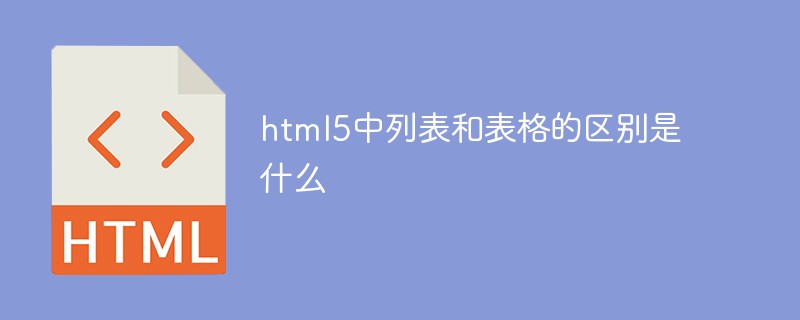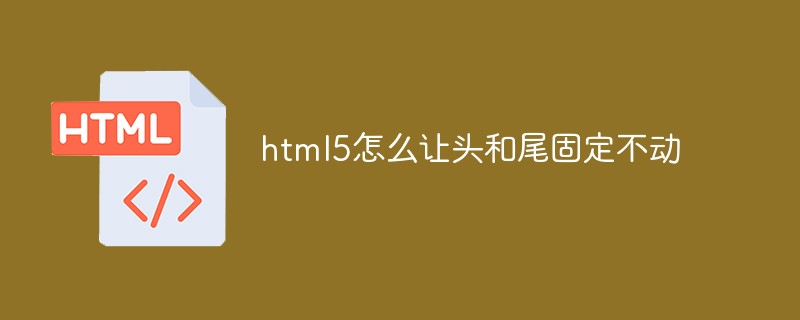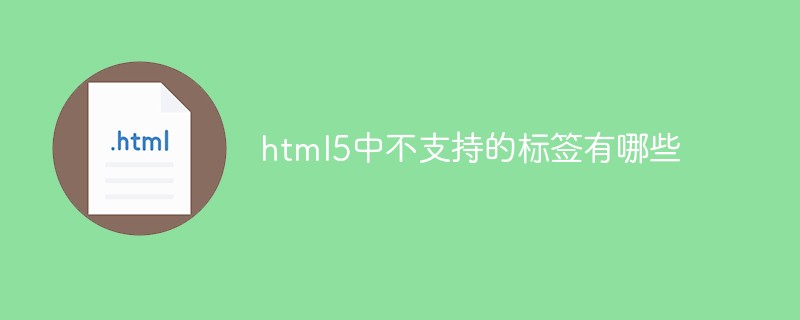The h5 page is embedded in the pc page as a preview module. The user can do some operations on the pc page, and then h5 makes responsive changes to achieve the preview effect. The first thing that comes to mind here is to embed the h5 page into the pc web page using an iframe, and then the pc sends the changed data to the iframe through the postMessage method. The h5 embedded in the iframe receives the data through addEventListener, and then makes responsive changes to the data. This article will give you a detailed introduction to the method of cross-domain communication in HTML5 through postMessage.
Here is a summary of the use of postMessage. The API is very simple:
otherWindow.postMessage(message, targetOrigin, [transfer]);
otherWindow is a reference to the target window. In the current scenario, it is iframe.contentWindow;
message is the message sent. Before Gecko 6.0, the message must be a string, but later versions can directly send the object without having to do it yourself. Serialize;
targetOrigin indicates the origin of the target window, and its value can be a string "*" (indicating unlimited) or a URI. When sending a message, if any of the protocol, host address or port of the target window does not match the value provided by targetOrigin, the message will not be sent; only if the three completely match, the message will be sent. For confidential data, it is very important to set the target window origin;
When postMessage() is called, a message event will be distributed to the target window. This interface has a message event, which has several important properties:
1.data: As the name suggests, it is the message passed in
2.source: The window object that sends the message
3. Origin: The source of the message window (protocol + host + port number)
In this way, we can receive cross-domain messages, and we can also send messages back in a similar way.
The optional parameter transfer is a string of Transferable objects passed at the same time as the message. The ownership of these objects will be transferred to the receiver of the message, and the sender will no longer retain ownership.
Then, when iframe is initialized, you can get the reference to the iframe and send the message through the following code:
// 注意这里不是要获取iframe的dom引用,而是iframe window的引用 const iframe = document.getElementById('myIFrame').contentWindow; iframe.postMessage('hello world', 'http://yourhost.com');
In iframe, you can receive the message through the following code.
window.addEventListener('message', msgHandler, false);
When receiving, you can filter the message origin as needed to avoid XSS attacks caused by receiving messages with illegal domain names.
Finally, for code reuse, message sending and receiving are encapsulated into a class, and the message type API is simulated, which is very convenient to use. The specific code is as follows:
export default class Messager {
constructor(win, targetOrigin) {
this.win = win;
this.targetOrigin = targetOrigin;
this.actions = {};
window.addEventListener('message', this.handleMessageListener, false);
}
handleMessageListener = event => {
if (!event.data || !event.data.type) {
return;
}
const type = event.data.type;
if (!this.actions[type]) {
return console.warn(`${type}: missing listener`);
}
this.actions[type](event.data.value);
}
on = (type, cb) => {
this.actions[type] = cb;
return this;
}
emit = (type, value) => {
this.win.postMessage({
type, value
}, this.targetOrigin);
return this;
}
destroy() {
window.removeEventListener('message', this.handleMessageListener);
}
}The above content is the method of html5 cross-domain communication through postMessage. I hope it can help everyone.
Related recommendations:
Sharing the basic usage of postMessage API in HTML5
Using postMessage in HTML5 to transfer data between two web pages
PostMessage in html5 implements POST cross-domain issues in Ajax
The above is the detailed content of html5 cross-domain communication method through postMessage. For more information, please follow other related articles on the PHP Chinese website!
 html5的div一行可以放两个吗Apr 25, 2022 pm 05:32 PM
html5的div一行可以放两个吗Apr 25, 2022 pm 05:32 PMhtml5的div元素默认一行不可以放两个。div是一个块级元素,一个元素会独占一行,两个div默认无法在同一行显示;但可以通过给div元素添加“display:inline;”样式,将其转为行内元素,就可以实现多个div在同一行显示了。
 html5中列表和表格的区别是什么Apr 28, 2022 pm 01:58 PM
html5中列表和表格的区别是什么Apr 28, 2022 pm 01:58 PMhtml5中列表和表格的区别:1、表格主要是用于显示数据的,而列表主要是用于给数据进行布局;2、表格是使用table标签配合tr、td、th等标签进行定义的,列表是利用li标签配合ol、ul等标签进行定义的。
 html5怎么让头和尾固定不动Apr 25, 2022 pm 02:30 PM
html5怎么让头和尾固定不动Apr 25, 2022 pm 02:30 PM固定方法:1、使用header标签定义文档头部内容,并添加“position:fixed;top:0;”样式让其固定不动;2、使用footer标签定义尾部内容,并添加“position: fixed;bottom: 0;”样式让其固定不动。
 HTML5中画布标签是什么May 18, 2022 pm 04:55 PM
HTML5中画布标签是什么May 18, 2022 pm 04:55 PMHTML5中画布标签是“<canvas>”。canvas标签用于图形的绘制,它只是一个矩形的图形容器,绘制图形必须通过脚本(通常是JavaScript)来完成;开发者可利用多种js方法来在canvas中绘制路径、盒、圆、字符以及添加图像等。
 html5中不支持的标签有哪些Mar 17, 2022 pm 05:43 PM
html5中不支持的标签有哪些Mar 17, 2022 pm 05:43 PMhtml5中不支持的标签有:1、acronym,用于定义首字母缩写,可用abbr替代;2、basefont,可利用css样式替代;3、applet,可用object替代;4、dir,定义目录列表,可用ul替代;5、big,定义大号文本等等。
 html5废弃了哪个列表标签Jun 01, 2022 pm 06:32 PM
html5废弃了哪个列表标签Jun 01, 2022 pm 06:32 PMhtml5废弃了dir列表标签。dir标签被用来定义目录列表,一般和li标签配合使用,在dir标签对中通过li标签来设置列表项,语法“<dir><li>列表项值</li>...</dir>”。HTML5已经不支持dir,可使用ul标签取代。
 html5是什么意思Apr 26, 2021 pm 03:02 PM
html5是什么意思Apr 26, 2021 pm 03:02 PMhtml5是指超文本标记语言(HTML)的第五次重大修改,即第5代HTML。HTML5是Web中核心语言HTML的规范,用户使用任何手段进行网页浏览时看到的内容原本都是HTML格式的,在浏览器中通过一些技术处理将其转换成为了可识别的信息。HTML5由不同的技术构成,其在互联网中得到了非常广泛的应用,提供更多增强网络应用的标准机。
 postmessage如何使用Nov 27, 2023 am 10:38 AM
postmessage如何使用Nov 27, 2023 am 10:38 AMpostMessage方法的基本使用方法:1、在要发送消息的窗口或标签页中,使用postMessage方法向目标窗口发送消息。它接受两个参数:要发送的消息对象和一个目标窗口的标识符(可选);2、在目标窗口中,使用addEventListener方法监听message事件来接收来自其他窗口的消息。


Hot AI Tools

Undresser.AI Undress
AI-powered app for creating realistic nude photos

AI Clothes Remover
Online AI tool for removing clothes from photos.

Undress AI Tool
Undress images for free

Clothoff.io
AI clothes remover

AI Hentai Generator
Generate AI Hentai for free.

Hot Article

Hot Tools

mPDF
mPDF is a PHP library that can generate PDF files from UTF-8 encoded HTML. The original author, Ian Back, wrote mPDF to output PDF files "on the fly" from his website and handle different languages. It is slower than original scripts like HTML2FPDF and produces larger files when using Unicode fonts, but supports CSS styles etc. and has a lot of enhancements. Supports almost all languages, including RTL (Arabic and Hebrew) and CJK (Chinese, Japanese and Korean). Supports nested block-level elements (such as P, DIV),

Notepad++7.3.1
Easy-to-use and free code editor

MinGW - Minimalist GNU for Windows
This project is in the process of being migrated to osdn.net/projects/mingw, you can continue to follow us there. MinGW: A native Windows port of the GNU Compiler Collection (GCC), freely distributable import libraries and header files for building native Windows applications; includes extensions to the MSVC runtime to support C99 functionality. All MinGW software can run on 64-bit Windows platforms.

Atom editor mac version download
The most popular open source editor

SublimeText3 Linux new version
SublimeText3 Linux latest version






